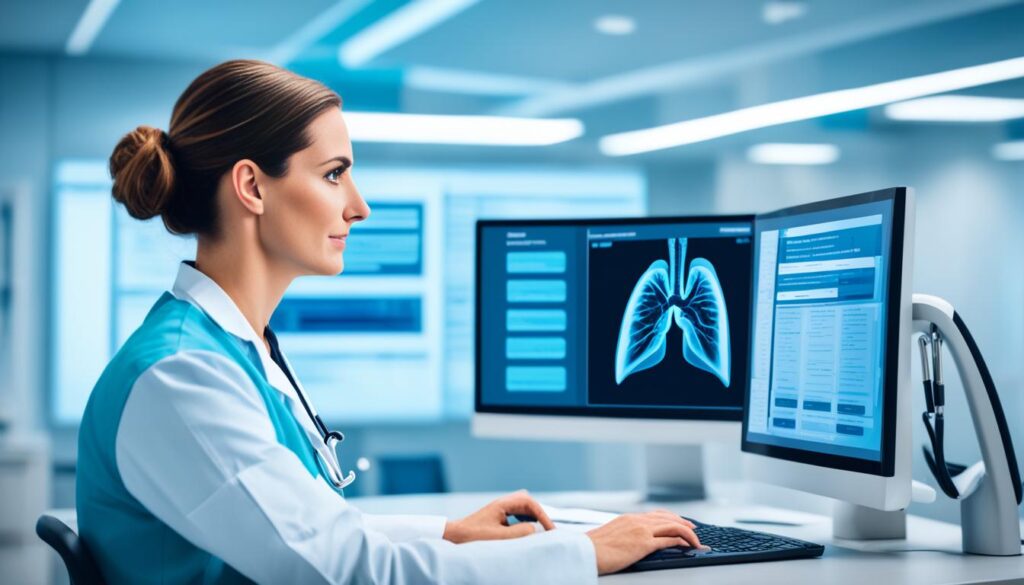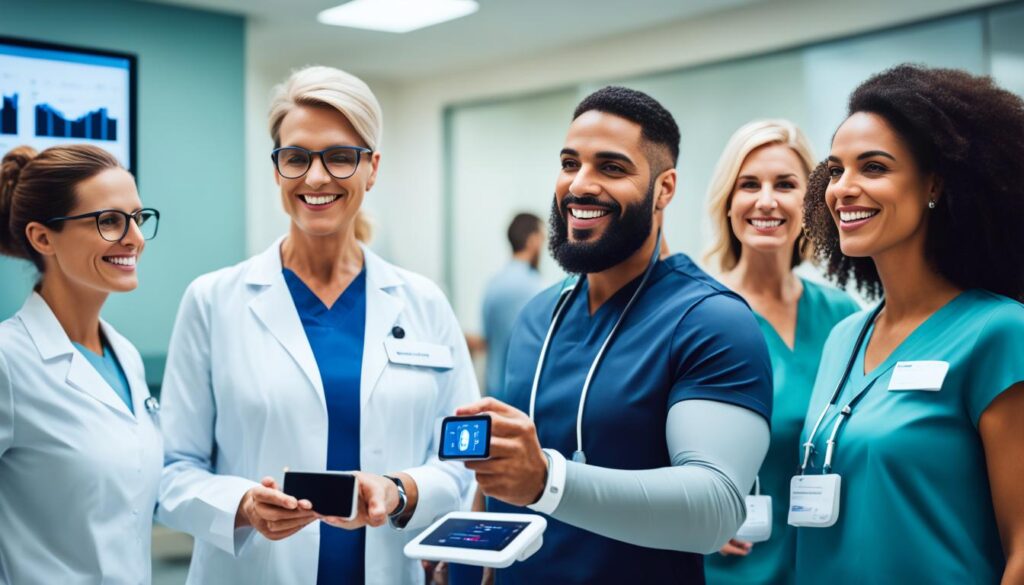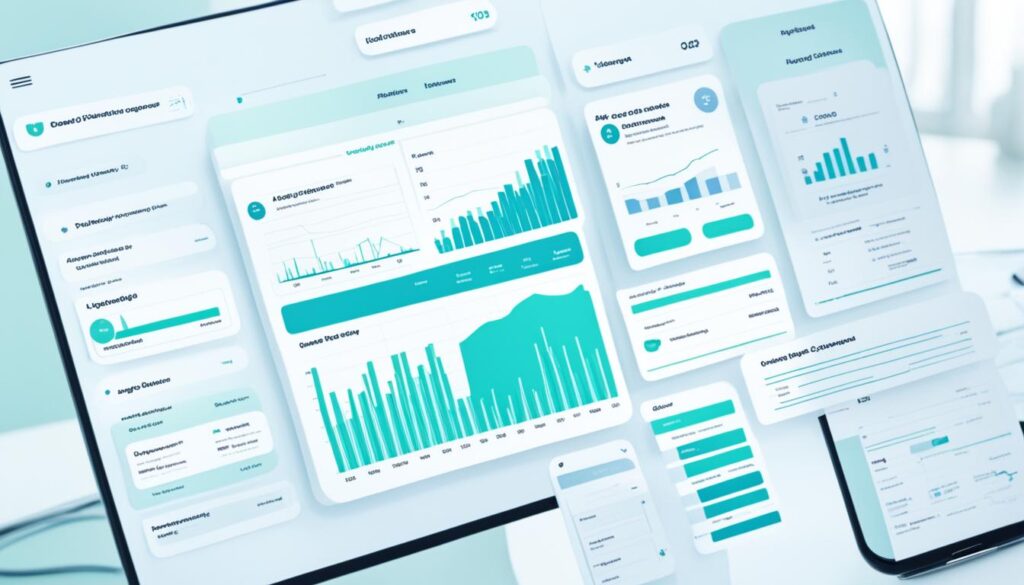Welcome to the digital age of healthcare, where electronic technology has the power to revolutionize customer service. But how can healthcare providers ensure exceptional care while embracing this technological shift? How can they leverage electronic technology to enhance the patient experience?
In this article, we will explore the challenges and opportunities of using electronic technology in healthcare to provide exceptional customer service. From protecting electronic health records to embracing tech innovations, we will uncover the key strategies for delivering outstanding care in the digital era.
Join us as we delve into the world of electronic technology and discover how it can transform the patient experience. Are you ready to take customer service in healthcare to new heights?
Patient Safety and Electronic Health Records
Patient safety is of utmost importance in the healthcare industry. To ensure a high standard of care, healthcare providers are increasingly incorporating electronic health records (EHRs) into their practices. EHRs offer numerous benefits, including improved communication, streamlined data collection, and enhanced documentation, which ultimately lead to better patient safety outcomes.
By digitizing patient records, healthcare professionals can easily access and share vital information, reducing the risk of errors and miscommunication. EHRs also enable healthcare providers to track and monitor patient data in real time, allowing for proactive interventions and prompt decision-making in critical situations.
However, it is crucial to strike a balance between the use of EHRs and the workflow of frontline healthcare providers. Excessive reliance on electronic systems without considering the practical implications can lead to disruption and potentially compromise patient safety. Therefore, it is essential to implement EHRs strategically and provide adequate training and support to ensure their effective integration within existing healthcare processes.
EHRs facilitate improved communication, data collection, and documentation, leading to better patient safety outcomes.
Protecting patients’ electronic health records is another critical aspect of ensuring patient safety. The digital nature of EHRs makes them susceptible to cyber threats, and medical records are highly valuable on the black market. Secure IT systems and robust data encryption measures must be implemented to safeguard patient information and prevent unauthorized access.
In conclusion, electronic health records have the potential to significantly enhance patient safety in the healthcare industry. By leveraging the benefits of EHRs while addressing implementation challenges and safeguarding patient data, healthcare providers can create a safer and more efficient care environment.

Benefits of Electronic Health Records for Patient Safety
| Benefit | Description |
|---|---|
| Improved Communication | EHRs enable seamless information exchange among healthcare professionals, reducing errors and improving coordination. |
| Enhanced Documentation | Electronic records provide a comprehensive and accurate overview of patient history, ensuring clarity and minimizing mistakes. |
| Real-Time Data Tracking | EHRs allow healthcare providers to monitor patient data in real time, enabling proactive interventions and timely decision-making. |
| Error Reduction | The use of EHRs minimizes the risk of errors caused by illegible handwriting, lost paperwork, or misplaced files. |
| Care Coordination | EHRs facilitate streamlined collaboration and efficient sharing of patient information among healthcare teams. |
Tech Innovations Aimed at Consumers
The future of healthcare is increasingly being shaped by tech innovations that are specifically designed to engage healthcare consumers and empower them to take control of their own health outcomes. These innovations range from electronic tools and apps to online portals and wearable devices, all of which are revolutionizing the way healthcare is accessed and delivered.
One notable tech innovation that is rapidly gaining popularity is telehealth. Telehealth allows patients to communicate with their physicians remotely, eliminating the need for in-person visits and providing convenient access to healthcare services. This virtual healthcare model not only saves time and money, but it also allows patients to receive quality medical care from the comfort of their own homes.

Another exciting development in healthcare technology is the integration of wearable devices. These devices, equipped with microprocessors and sensors, can monitor and measure various health metrics such as heart rate, sleep patterns, and physical activity. The data collected by these wearable devices is not only valuable to patients in tracking their own health, but it also provides healthcare providers with important insights for diagnosis, treatment, and monitoring.
By leveraging these tech innovations, healthcare consumers have the opportunity to actively participate in their own healthcare journey, leading to better health outcomes and improved patient satisfaction. The ability to access healthcare services remotely and track personal health data in real-time empowers individuals to make informed decisions about their well-being and seek timely medical intervention when needed.
With the continuous advancements in technology, we can expect to see even more innovative solutions geared towards enhancing the healthcare experience for consumers. From personalized health apps to virtual reality simulations for medical education, the possibilities for improving patient engagement and outcomes through electronic technology are virtually limitless.
Benefits of Tech Innovations for Healthcare Consumers
Here are some key benefits that healthcare consumers can enjoy with the adoption of tech innovations:
- Convenience: Telehealth enables patients to receive medical care from the comfort of their own homes, eliminating the need for travel and reducing wait times.
- Accessibility: Tech innovations bridge the gap between patients and healthcare providers, giving individuals easier access to healthcare services, regardless of their location.
- Engagement: Wearable devices and health apps encourage individuals to actively engage in their health by tracking vital signs, setting health goals, and receiving personalized health recommendations.
- Evidence-based decisions: The availability of real-time health data allows patients to make informed decisions about their well-being, seeking medical attention when necessary.
- Improved collaboration: Tech innovations facilitate better communication and collaboration between patients and healthcare providers, leading to more effective and personalized care plans.
As technology continues to evolve, it is clear that healthcare consumers will play a more active role in managing their health. By embracing these tech innovations, healthcare providers can enhance the patient experience, improve health outcomes, and truly empower individuals to take charge of their own well-being.
Making Data Usable and Accessible to Consumers
The digitization of healthcare has revolutionized the way medical data is accessed and used, placing a strong emphasis on data usability and patient-friendly views. With the transition to electronic medical records (EMRs), patients now have the opportunity to fully engage with their health information and expect it to be presented in a clear and digestible manner. This shift in approach not only enhances patient empowerment but also enables individuals to make more informed decisions about their healthcare.
Integrating various sources of data and displaying it in a patient-friendly view can significantly improve engagement and facilitate a more active role in healthcare decision-making. By presenting information in a format that is easy to understand, patients can gain a comprehensive overview of their health status, treatment plans, and medication records, fostering a sense of ownership over their well-being.
To ensure data usability and patient-friendly views, healthcare providers have prioritized the development and implementation of intuitive user interfaces and customized dashboards. These technologies transform complex medical data into easily interpretable visualizations, such as charts, graphs, and interactive diagrams. With these tools, patients can quickly grasp trends, identify patterns, track progress, and comprehend the impact of their lifestyle choices on their overall health.

By leveraging the power of electronic medical records and embracing a patient-centric approach, clinics and hospitals can empower individuals to take charge of their health, fostering a collaborative environment between healthcare professionals and patients. Empowering patients with accessible and understandable data not only improves their satisfaction and engagement but also enhances the overall quality of care and health outcomes.
Benefits of Usable Data
Improved Patient Engagement: By presenting medical data in a patient-friendly manner, individuals are more likely to actively participate in their treatment plans, follow medical advice, and adhere to prescribed medications.
Enhanced Health Literacy: User-friendly data visualizations and explanations can bridge the gap between medical jargon and everyday language, improving patients’ understanding of their health conditions and treatments.
Proactive Healthcare Decision-Making: Accessible data enables patients to make informed decisions about their health, leading to proactive lifestyle changes and preventive measures.
Shared Decision-Making: Usable data facilitates collaboration between healthcare providers and patients, allowing for shared decision-making based on a comprehensive understanding of the patient’s health status.
Better Health Outcomes: When patients have access to usable and accessible data, they are more likely to actively participate in their healthcare and achieve better health outcomes.
| Benefits of Usable Data | |
|---|---|
| Improved Patient Engagement | |
| Enhanced Health Literacy | |
| Proactive Healthcare Decision-Making | |
| Shared Decision-Making | |
| Better Health Outcomes |
The Role of Practitioners and Implementing Effective IT Systems
Implementing effective IT systems in the healthcare industry is a crucial step towards delivering exceptional customer service and improving patient outcomes. However, it requires significant investments in terms of both time and money. To ensure a successful implementation, healthcare practitioners play a vital role in navigating the challenges and complexities involved.
One approach that has shown promise is the “Big Bang” implementation strategy. This involves making rapid and comprehensive changes across the organization, resulting in a more efficient and uniform platform. By avoiding incremental and stretched-out implementations, disparities in technology levels can be addressed, leading to a smoother integration process.
It’s important to note that different organizations within the healthcare industry may have varying needs and strategies when it comes to implementing IT systems. What works for one organization may not work for another. Therefore, a tailored approach that aligns with the specific needs and goals of each organization is crucial.
Practitioners should collaborate with IT teams and technology vendors to define the requirements and goals of the IT system implementation. By understanding the unique needs of the organization and engaging in effective communication, practitioners can ensure that the IT system is designed and implemented to meet their specific needs. This collaborative approach maximizes the chances of success and minimizes potential disruptions during the transition period.
Furthermore, healthcare practitioners should also take an active role in training and educating their teams on the effective use of the IT system. Providing hands-on training sessions, creating user-friendly documentation, and fostering a culture of continuous learning can empower healthcare professionals to use the IT system effectively. This not only enhances the overall workflow and efficiency but also encourages staff buy-in and adoption of the new technology.
By actively participating in the implementation process, healthcare practitioners can help ensure that effective IT systems are seamlessly integrated into the workflow, leading to improved customer service and enhanced patient experiences in the healthcare industry.
Key Points:
- The “Big Bang” implementation approach can be more efficient for IT system implementations in healthcare.
- Collaboration between practitioners, IT teams, and technology vendors is crucial for defining requirements and goals.
- Training and education are key to ensure effective use of the IT system.
- Tailored approaches are necessary due to varying needs and strategies within the healthcare industry.
Conclusion
Providing exceptional customer service when utilizing electronic technology in healthcare is paramount to enhancing patient experience and outcomes. By prioritizing patient safety, safeguarding electronic health records, embracing technological innovations, and optimizing data accessibility, healthcare providers can deliver exceptional care and transform the patient experience.
Effective implementation of IT systems and seamless transitions are essential responsibilities of healthcare practitioners. By leveraging the potential of electronic technology and fostering a customer-centric approach, healthcare providers can ensure a seamless integration that enhances the overall quality of care.
In conclusion, exceptional customer service in healthcare requires a comprehensive approach that integrates electronic technology. By embracing the possibilities brought by technological advancements, healthcare providers can create a patient-centered environment that not only improves outcomes but also empowers patients to actively participate in their own care.
FAQ
How can electronic technology improve customer service in healthcare?
Electronic technology has the potential to improve customer service in healthcare by facilitating better communication, data collection, and documentation. It enables innovations like telehealth and wearable devices, which can enhance the patient experience and outcomes.
What role do electronic health records play in patient safety?
Electronic health records (EHRs) play a crucial role in improving patient safety. They facilitate improved communication, data collection, and documentation, leading to better patient safety outcomes. EHRs need to be balanced with frontline providers’ workflow to ensure effective use of the technology.
How can electronic health records be protected?
Protecting electronic health records is essential to ensure patient privacy and prevent unauthorized access to medical records. Robust security measures, such as encryption and access control, should be implemented to safeguard patient information.
What tech innovations are aimed at engaging healthcare consumers?
There are various tech innovations aimed at engaging healthcare consumers, including telehealth and wearable devices. Telehealth allows patients to communicate with their physicians remotely, while wearable devices provide valuable health data to both patients and healthcare providers.
How can data be made usable and accessible to healthcare consumers?
With the digitization of healthcare, data can be presented in a patient-friendly view to improve engagement and enable patients to become more informed and proactive in their healthcare decisions. Integrating and presenting data in a digestible manner can empower patients to take control of their health outcomes.
What is the role of practitioners in implementing effective IT systems?
Practitioners in the healthcare industry play a vital role in implementing effective IT systems. They need to be trained properly to ensure a seamless transition and maximize the benefits of electronic technology. Their expertise and input are crucial in designing and implementing IT systems that align with the specific needs of the organization.
